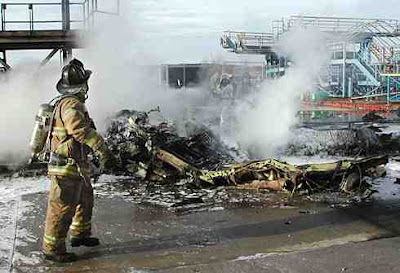 USA Today
USA Today has an article by Alan Levin about airline crashes, or the lack thereof:
For the first time since the dawn of the jet age, two consecutive years have passed without a single airline passenger death in a U.S. carrier crash. No passengers died in accidents in 2007 and 2008, a period in which commercial airliners carried 1.5 billion passengers on scheduled airline flight. One major accident occurred during that time, last month's crash of a Continental Airlines jet in Denver. Going without a crash fatality for a full year has been rare. Only four years since 1958 have passed without a passenger fatality, the analysis found. That makes the two-year string even more impressive, aviation safety experts say. "It's a new record," says Arnold Barnett, a Massachusetts Institute of Technology professor who has written extensively about airline fatality risks. "While it doesn't mean risk is now non-existent," Barnett says, "it certainly means they have done a fantastic job at keeping all these threats at bay." Barnett calculates that it's more likely for a young child to be elected president in his or her lifetime than to die on a single jet flight in the USA or in similar industrial nations in Europe, Canada or Japan.
"It's just more evidence of what has been the improving safety record that we've seen over the past several years," says Bill Voss, president of the Flight Safety Foundation, a non-profit group that promotes aviation safety around the world.
Overall risks of death on an airline flight have dropped dramatically. Fatality risk fell to 68 per billion fliers this decade, less than half the risk in the 1990s, according to National Transportation Safety Board data. Since 2002, the risks of dying on a flight plunged to nineteen per billion, an 86% drop from the 1990s.
The fiery Continental Airlines crash on 20 December in Denver shows it can still be hazardous to fly. The jet turned off a runway while attempting to take off, breaking apart and bursting into flames. All 115 people aboard escaped as jet fuel burned through the right side of the jet. The crash injured 38 people, five seriously, the NTSB said.
The crash helps illustrate why death rates have fallen, Voss says. Government requirements during the past two decades have made planes safer in violent impacts and fires, reducing the likelihood of deaths, he says. Technology improvements, more reliable aircraft and better training also have helped reduce accidents, Voss says.
The lack of fatal crashes creates new challenges for federal regulators and the airline industry. Further safety improvements must come from studying the minor anomalies of everyday flight. "What we're looking at now is the risks before they manifest themselves into accidents," says Basil Barimo, with the Air Transport Association.
Rico says it's liable to be awhile until he's on another airplane, but he hopes they keep it up...
 USA Today has an article by Alan Levin about airline crashes, or the lack thereof:
USA Today has an article by Alan Levin about airline crashes, or the lack thereof:






No comments:
Post a Comment